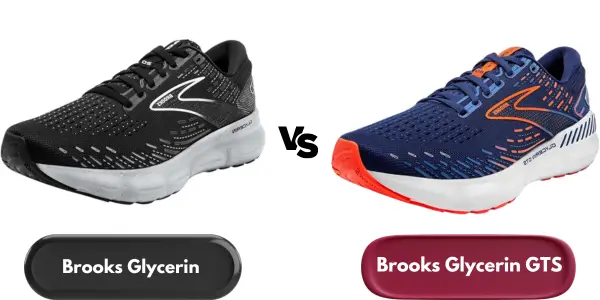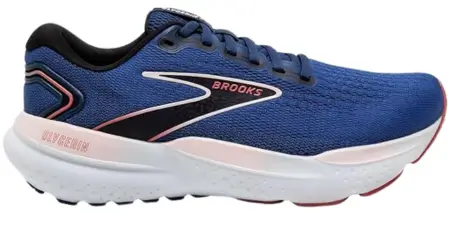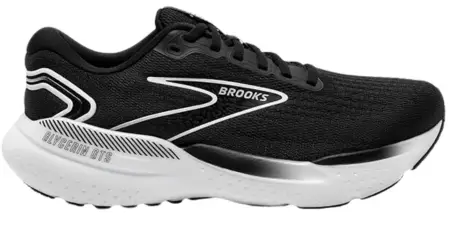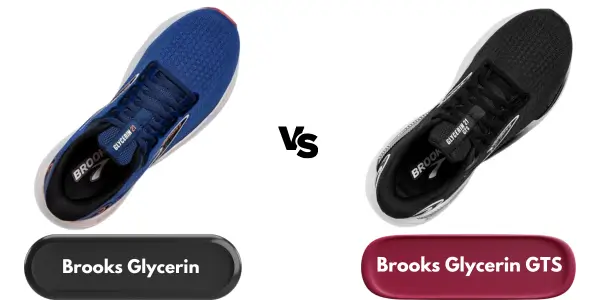Brooks Glycerin vs Glycerin GTS Shoes Review
Last Updated: January 01, 2025 | Author: Jake Thompson
Are you on the hunt for the perfect running shoes but can't decide between Brooks Glycerin and Glycerin GTS? You're in the right place! In this Brooks Glycerin vs Glycerin GTS comparison, we're diving deep into what makes each shoe stand out. Wondering about comfort, support, or which one will have you racing past your personal best?
We've got the answers! Both shoes are top of their game, but they have some key differences that could make or break your running experience. So, lace up your current kicks, get comfortable, and let's explore these two titans of the track together. Ready to find out which shoe will claim victory as your next running partner? Keep reading, and we'll take this journey step by step.

Table of Content:
- Key Takeaways
- Table: Brooks Glycerin vs Glycerin GTS
- Pros & Cons
- Overview of the Brooks Glycerin 21 and Glycerin GTS 21
- Midsole Comparison: DNA Loft v3 Foam and GuideRails Support
- Design and Performance
- Outsole and Upper
- Durability
- Comfort and Cushioning
- Final Verdict
- Frequently Asked Questions
Key Takeaways
- - The Brooks Glycerin 21 is best for neutral runners, focusing on cushioning and comfort.
- - The Glycerin GTS 21 provides added stability for mild overpronators with GuideRails support.
- - Both models feature DNA Loft v3 foam for a soft, responsive ride.
- - Choice between the Glycerin 21 and GTS 21 depends on foot type and stability needs.
Table: Brooks Glycerin vs Glycerin GTS

|

|
|
|---|---|---|
| Specification | Brooks Glycerin 21 | Brooks Glycerin GTS 21 |
| Type | Neutral running shoe | Stability running shoe |
| Midsole Drop | 10mm | 10mm |
| Weight | 8.8oz / 249.5g | 10.5oz / 297.7g |
| Cushioning | DNA LOFT v3 for supreme softness | DNA LOFT v3 for supreme softness plus added GuideRails support |
| Best For | Supreme softness, comfortable fit, smooth transitions, road running | Supreme softness, comfortable fit, support, road running |
| Features | Improved fit, smooth, stable transitions | Improved fit, whole-body support |
| Sustainability | 59.7% recycled materials in the upper, 4.1 plastic bottles diverted | 61.1% recycled materials in the upper, 3.75 plastic bottles diverted |
| Price |
Pros & Cons
Brooks Glycerin 21
Pros:- - Improved cushioning and comfort.
- - Lighter with more stack height compared to its predecessor.
- - Luxurious, plush upper for a comfortable fit.
- - Initial raised side walls may be uncomfortable for some.
- - Less breathable redesigned upper.
- - Lacks the responsiveness desired by some runners.
Brooks Glycerin GTS 21
Pros:- - DNA Loft V3 midsole provides enhanced comfort.
- - Supportive, flexible knitted upper.
- - Improved stability features.
- - May lack bounce.
- - Heavy and high drops may not suit all preferences.
Overview of the Brooks Glycerin 21 and Glycerin GTS 21
When looking at both Glycerin models they're made for different kinds of feet and running styles. I've run marathons and tried out tons of shoes, so I know how important it is to find the right fit.
The Glycerin 21 is super comfy and soft, perfect for runners like me who just want to feel like they're running on clouds. I remember wearing them during a long training run and hardly feeling tired at all – they were that good at soaking up the impact.
Then there's the Glycerin GTS 21, which is a bit different. It's designed for runners who need extra support because their feet roll inwards a bit when they run. This is important because the wrong shoe can lead to injuries. I had a friend who always struggled with this, and once they switched to this shoe, they could run longer distances without pain.
Both shoes are well-designed, but they're made for different needs. What I've learned from my year's of running and helping others find their gear is that there's no one-size-fits-all. You have to think about what your feet are like and how you run. The right shoe makes all the difference – it can help you run further, faster, and without getting hurt.
Midsole Comparison: DNA Loft v3 Foam and GuideRails Support
The Glycerin models stand out for using a high level of cushioning. Its amazing foam helps your feet stay fresh for a longer time. It's soft, but it also bounces back, so I don't feel like I'm losing energy with each step. This is great for someone like me who just runs without worrying too much about how my foot lands.
Then, there's something for runners who might need a bit more help with their forefoot movement. It's called GuideRails. Think of it like those bumpers they put up at bowling alleys for kids but for your feet. They don't force your feet to move a certain way; they just gently guide them if they start to go too far to one side.
In my experience, whether you're just out for a casual jog or pushing through the last miles of a marathon, having the right support under your feet can make all the difference. And it's not just about finishing the race; it's about how you feel during and after.
Design and Performance
When looking at two types of running shoes, one thing stands out to me from years of running marathons and helping people find the right gear: both are great for making runs smooth, but they suit different runners. They both have a soft and bouncy feel when you step down because of the special foam used in them. However, one has something extra called GuideRails that helps runners who tend to roll their feet inwards too much when they run, keeping them stable without messing with their natural step.
From my experience, the first shoe is perfect for runners who don't have issues with their feet rolling in or out too much. It's super comfy and responsive, making it my go-to for long runs or everyday training. The second shoe, with its extra support, is a lifesaver for runners like a friend of mine who struggles with overpronation. During a marathon training season, they switched to this shoe, and it made a huge difference in preventing knee pain they used to have because of their running form.
In picking between these two, it's all about understanding your running style and what your feet need for support. I've seen firsthand how choosing the right shoe can turn a struggle into a stride, both in my runs and for countless customers.
Outsole and Upper
When looking into these running shoes, I noticed something cool about the top part and the bottom part that helps with running. The top part is made of this airy material that lets your feet breathe and feel comfortable, even when you're running for a long time. It fits your foot just right, so you don't feel any discomfort no matter how far you run.
For the outsole of the shoe, here's a few things to talk about:
- 1. The material they use outsole is soft and does a great job of soaking up the shock when your foot hits the ground. This makes each step feel smoother.
- 2. The way the outsole is designed helps your foot move naturally and easily. It doesn't make your foot feel stiff or awkward when you're running.
- 3. Some shoes have extra support on the outsole to help people who might run in a way that could cause them pain. This extra support isn't too much; it's just right to help keep your run comfortable without messing up your natural running style.
From my experience, having shoes that can breathe well and keep your feet feeling good makes a big difference, especially on long runs. The outsole design helps in making sure each step feels good and keeps you running the way you naturally do.
Durability
After checking out many shoes for running, it's important to talk about how tough some are. In this regard, both Glycerin 21 and Glycerin GTS 21 stand out. They have a strong outsole, which is great because it won't fall apart quickly. This bottom part also helps keep a good grip on the ground during runs, which is super important when running in different places.
They also have this new kind of top part that helps your feet breathe while making sure the shoe doesn't get loose or break easily. This is a big deal because some running shoes don't last long before they start to fall apart.
From my runs, I can say these shoes are really on the same level when it comes to lasting a long time. The way they're made, from the bottom to the top, means they don't just feel good; they're also a smart pick for runners who want their shoes to last.
Comfort and Cushioning

When choosing the right running shoes, comfort and support are key. I've run in many different pairs, and I've found both Brooks shoes stand out for their cushioning and support, making long runs feel much better.
These shoes have a special foam that makes them super soft. I remember running a half marathon and feeling like I was running on clouds. They didn't make my feet tired or sore, which was amazing.
Then, there's another pair for runners who need a bit more help with their foot movement. They use the same soft foam but add something extra to keep your feet in the right position. I've seen this help a lot during my longer training sessions, especially when my legs start to get tired. It's like having a guide that keeps everything aligned, which helps prevent soreness.
Both Glycerin models are super comfy, but if you're just running for fun and don't worry much about your foot movement, the Glycerin 21 might be better. However, if you're like me and need a bit more support to keep your run smooth, the Glycerin GTS 21 is a great choice. It's all about finding the right balance for your feet, and I love helping others find that perfect pair.
Final Verdict
In this Brooks Glycerin vs Glycerin GTS shoe review, we've explored in-depth the ins and outs of both running shoes. The bottom line is choosing the right one depends on your unique needs. If you're someone who appreciates supreme comfort and cushioning without the need for extra support, the Brooks Glycerin 21 is your go-to, perfect for those long, cloud-like runs.
On the flip side, the Glycerin GTS 21 stands out for runners needing more stability to avoid injuries, thanks to its GuideRails support that gently corrects overpronation. My firsthand experience, along with feedback from fellow runners, underscores the importance of matching your shoe to your running style.
Frequently Asked Questions
1. What's the difference between Brooks Glycerin 21 and Glycerin GTS 21?
The Brooks Glycerin 21 is a premier cushioned running shoe that offers a softer ride for your feet, featuring an updated mesh upper for breathability and comfort. The Glycerin 21 GTS, on the other hand, is the supportive version of the Glycerin 21, adding traditional stability elements like a medial post for those who need extra arch support. Both provide excellent traction and durability with a rubber outsole, but the GTS is for runners needing more secure guidance.
2. How does the new Glycerin update improve my running experience?
The new Glycerin has been updated with an engineered air mesh upper that improves breathability, keeping your feet cool and comfortable during long runs. The infused midsole offers a softer, more responsive feel underfoot, making for a smoother ride. With a durable rubber outsole, it delivers reliable traction on various surfaces, and the overall design is lightweight, enhancing your running experience without weighing you down.
3. Can I use Brooks Glycerin shoes for trail running?
While Brooks Glycerin and Glycerin GTS are engineered for comfort and stability on the road, their rubber outsole and durable construction can handle light trail running. However, they are primarily designed as road shoes. For dedicated trail runners, a shoe specifically designed for trail running with more aggressive traction and protective features would be more suitable.
4. What makes the Glycerin 21 GTS a good choice for recovery runs?
The Glycerin 21 GTS features firmer cushioning with traditional stability components like a medial post and a secure heel counter, making it ideal for recovery runs. This design helps correct overpronation and provides a stable, supportive base to reduce stress on your feet and joints, aiding in recovery. The shoe's overall premium construction and softer midsole also contribute to a comfortable, supportive recovery run.
5. Is the Brooks Glycerin suitable for all foot shapes?
Yes, the Brooks Glycerin series is designed to be well-rounded and accommodate various foot shapes. With its engineered air mesh upper, the shoe offers a flexible and breathable fit that adapts to your foot, providing comfort and a secure wrap around the midfoot. Whether you have wide, narrow, or standard feet, the Glycerin's premium materials and design ensure a comfortable fit for most runners.
Share this:







